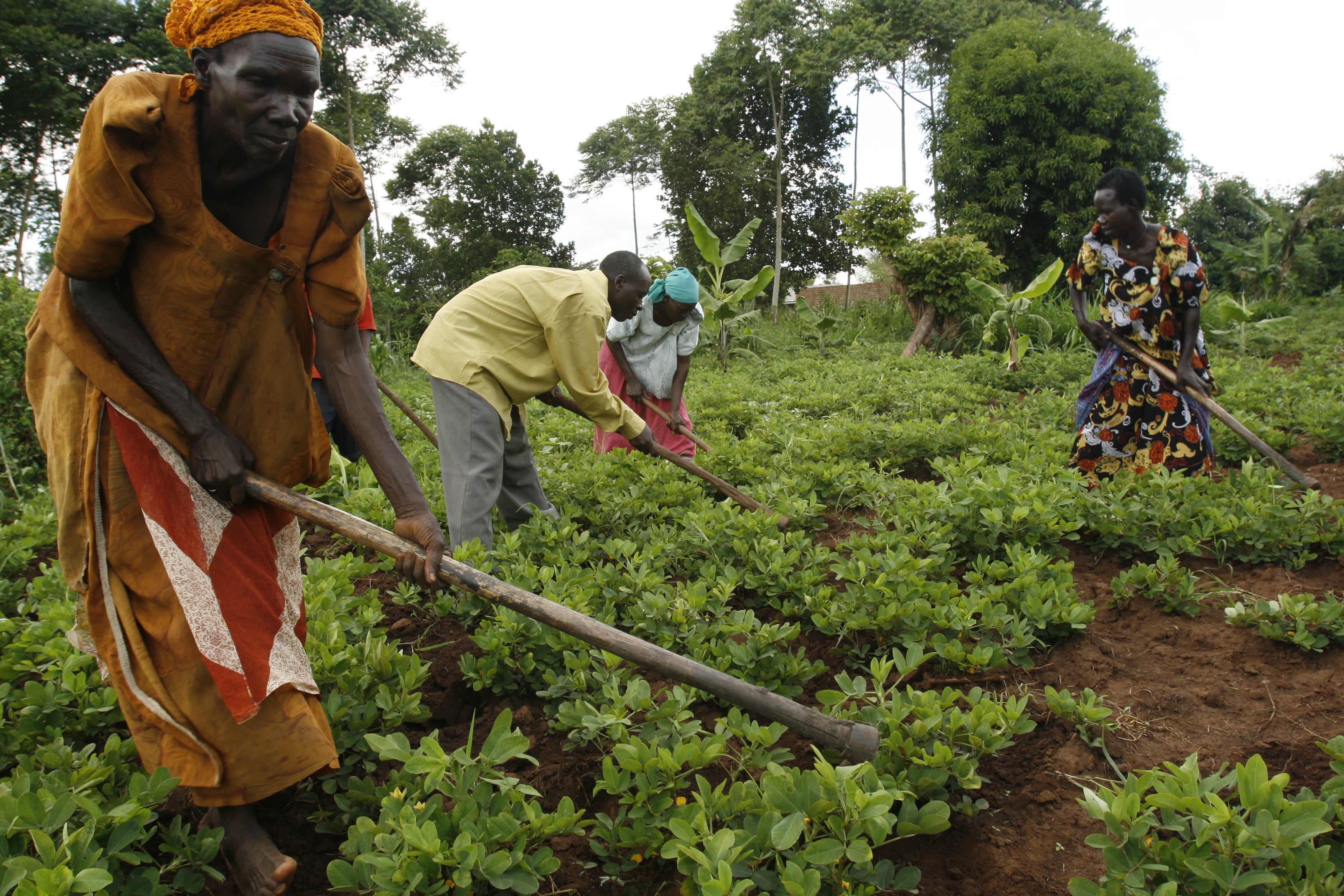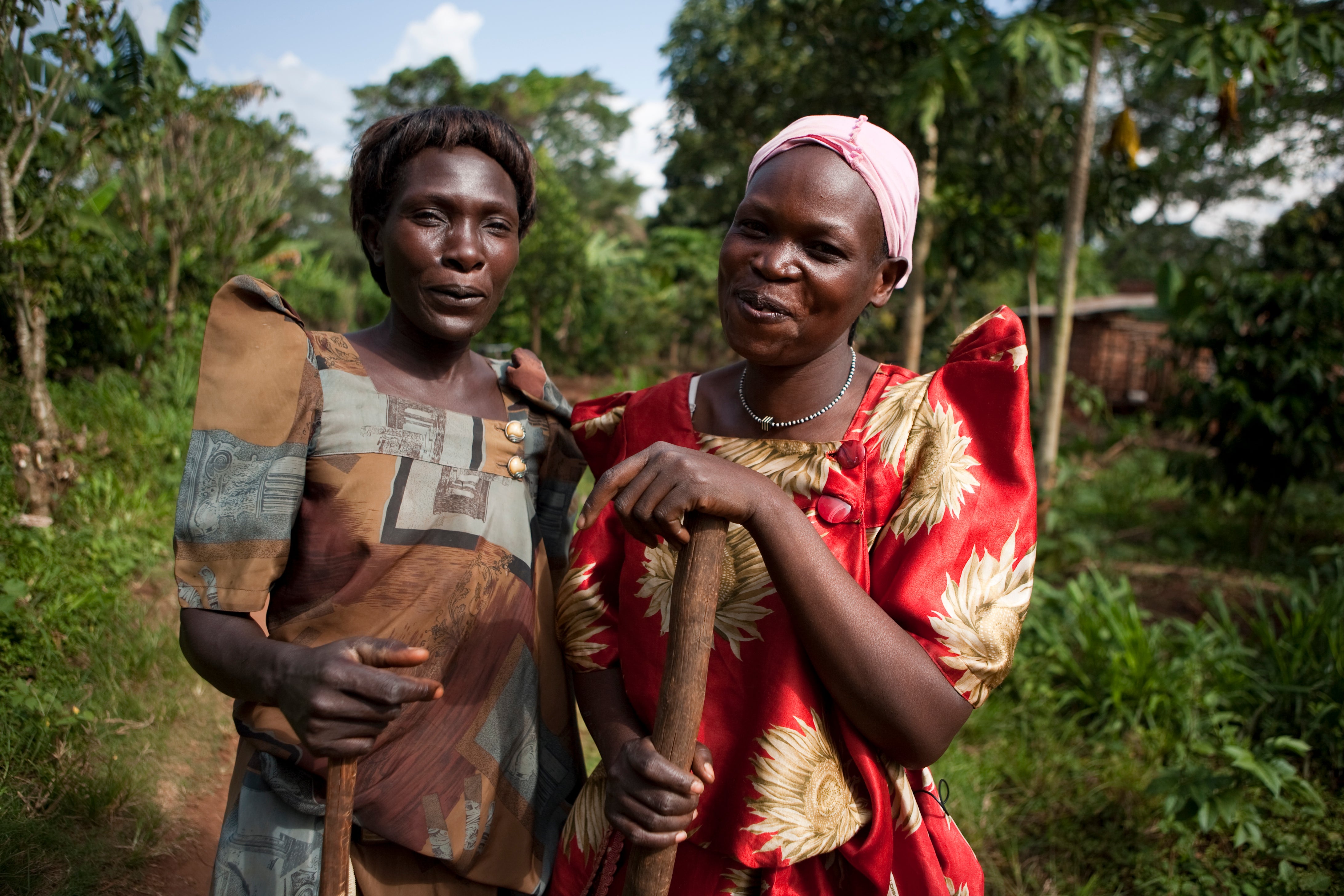Geographic and demographic factors
Uganda is a country located in East Africa, bordered by South Sudan to the north, Kenya to the east, the Democratic Republic of the Congo to the west, and Rwanda and Tanzania to the south.
Most of Uganda is situated on a plateau that drops from 5,000 feet (1,500 m) in the south to 3,000 feet (900 m) in the north. Almost a fifth of Uganda’s total area (44,650 km2) is open water and swamps, including several substantial lakes—some of which (including Africa’s largest, Lake Victoria) it shares with neighboring countries.
Uganda’s climate is primarily tropical, with annual rainy seasons. The Northern Region has less rainfall than the rest of the country, and the northeast in particular can become semiarid during the dry season.
As of 2022, 47 million people lived in Uganda, making it the 8th most populous country in Africa and the 31st most populous in the world., From 2006 to 2016, the population increased by 11 million and the annual population growth rate increased from 3.2% to 3.7%. According to the National Population and Housing Census of 2014, women of reproductive age (ages 15–49) made up 39% of the national population.
Uganda’s population is primarily concentrated in the central and southern parts of the country, particularly in the capital, Kampala (home to 3.1 million people), and along the coasts of Lake Victoria and Lake Albert. In contrast, the relatively dry northeastern area is the least populated. As shown in Figure 3, the country is divided into multiple subregions, which can be grouped into four broader regions: Central, Eastern, Northern, and Western.
Figure 3. Map of Uganda subregions

Uganda made substantial progress on several key indicators related to maternal and child health during the study period from 2006 to 2016.
The infant mortality rate decreased from 61.6 deaths per 1,000 live births in 2006 to 37.3 per 1,000 live births in 2016, representing a relative 39.5% decline. Similarly, the maternal mortality ratio declined by 25.2%, from 416 per 100,000 in 2006 to 311 per 100,000 in 2016. The report on the 2022 Uganda Demographic and Health Survey, the most recent survey conducted, confirms that these positive trends in reducing both infant and maternal mortality have continued. Overall life expectancy increased from 52.8 years to 62.0 years during this 10-year period. Uganda’s gains in reducing anemia thus should be seen as part of a broader pattern of notable public health achievements.
Improvements in water, sanitation, and hygiene also contributed to better health outcomes. Access to improved drinking water sources increased from 52.3% of households in 2000 to 78.3% in 2016, while access to improved sanitation rose from 3.9% to 18.7% over the same period., The 2022 Uganda Demographic and Health Survey highlights continued progress in both drinking water and sanitation access. A broad range of demographic statistics referred to throughout this narrative are presented in Figure 4.
Figure 4. National demographic, economic, and other contextual statistics and trends in Uganda, 2000–2016

Historic and political factors
As of 2019, Uganda comprises four major regions (Central, Eastern, Northern, and Western) and 135 districts. At the local level, governance has been profoundly shaped by a drive toward decentralization. In 1995, Uganda’s constitution provided for a broad transfer of powers from the central government to district and local authorities, with differing government structures in urban and rural areas., This shift substantially influenced the health sector, shaping how policies were tailored and implemented at the local level.
In urban areas, the government structure is made up of a hierarchy of councils, with city councils at the top, and municipality councils, division/town councils, ward councils, and cell councils serving progressively smaller jurisdictions. In rural areas, the most influential level of government is the district council, with county councils, subcounty councils, parish councils, and village councils at lower levels.
Nutrition governance
With nutrition gaining prominence as a key development priority, the Ugandan government and donors active in the country have started to intensify their focus on this critical issue in recent years. In 2011, Uganda joined Scaling Up Nutrition, an international, multisectoral collaboration that aims to end all forms of malnutrition by 2030. As part of its participation in Scaling Up Nutrition, Uganda established the Uganda Nutrition Action Plan (UNAP), which all national and district respondents in our study called a critical platform for the coordination of nutrition-related activities across ministries, departments, and agencies.
“Now all stakeholders recognize that nutrition is not a one-sector show like Ministry of Health, but all line sectors have to get on board.” (Public health nutritionist)

Alongside the development of UNAP and UNAP II, Uganda has also created national-level coordinating bodies like the UNAP Secretariat and the Multi-Sectoral Nutrition Technical Coordination Committee, along with district nutrition coordination committees for subnational planning and implementation of nutrition activities. These institutions have their distinct roles—including reviewing key nutrition indicators, analyzing implementation performance, and providing policy direction—but they share an overall purpose of mainstreaming the goals of UNAP in collaboration with development partners, the private sector, and community social organizations.
Uganda achieved notable progress in improving nutrition outcomes during the first phase of UNAP. The program employed a multisectoral approach involving key nutrition interventions, emphasizing the role of the education, health, and agriculture sectors. This collaborative effort led to measurable improvements in food security, increased health services use, and enhanced antenatal care, among other positive outcomes, throughout the country.
Figure 5. Structure of nutrition governance in Uganda

Overall, national-level respondents reported that the policy environment is receptive to new ideas and innovations in nutrition, and that the prominence of this topic has been reflected in many recent national development documents, including the Uganda Vision 2040 and the Third National Development Plan (NDPIII) 2020/21 – 2024/25. This supportive landscape has facilitated various initiatives that have contributed to reducing anemia prevalence, as explored in the “” section.

Health care system
In 1999, Uganda developed the landmark National Health Policy to provide universal health coverage for basic services and implement cost-effective interventions that address the major causes of disease. Uganda’s public health system, especially in rural areas, is increasingly prioritizing the provision of high-quality care since many turn to private facilities even though these facilities vary in quality. A study of public and private facilities conducted in 2014 in Mukono District in the Central Region of Uganda showed that 60% of parents with febrile children first sought care in the private sector.
Uganda’s health care system comprises both public and private providers. Public facilities account for 45% of all health care facilities, and private not-for-profit and private for-profit facilities make up 14% and 40%, respectively., Health service delivery is often community based, with village health teams (VHTs) as the first point of contact, providing community-based preventive care, including immunization and health education .
Health services are structured in a tiered system: Health center II facilities serve around 5,000 people and provide basic outpatient care, including antenatal care and family planning. Health center III facilities, serving 20,000 people, offer maternity and inpatient services. Health center IV facilities, functioning as mini-hospitals for 100,000 people, provide emergency surgery, blood transfusions, and laboratory services.
Above these, Uganda has 139 general hospitals (serving 500,000 people), 14 regional referral hospitals (serving 2 million people), and 5 national referral hospitals, which provide specialized services and act as the top referral level., Each level plays a role in delivering antenatal care, family planning, and other essential health services.
Figure 6. Hierarchy of health service provision in Uganda

Republic of Uganda, Ministry of Health (MOH). Uganda Hospital and Health Centre IV Census Survey 2014. Kampala, Uganda: MOH; 2014. Accessed March 20, 2025. https://library.health.go.ug/health-infrastructure/uganda-hospital-and-health-centre-iv-census-survey
In recent years, the government and development partners have worked to address a shortage of health care workers through investments and policies. As a result of their efforts, the number of doctors, nurses, and midwives in Uganda more than doubled between 2000 and 2016.,
Much of this progress happened after 2010, when the Human Resources for Health Information System publicized data about the staff shortages, which helped the Ministry of Health and civil society with their advocacy efforts and eventually led to a vote in Parliament to increase funding. These investments brought much-needed resources to the Ugandan health system, and some of the resulting resiliency can be seen in Exemplars work that studied continuity of essential health services during the COVID-19 pandemic. To cite one example, births attended by a skilled professional increased substantially, from 42% in 2006 to 74% in 2016.,
In 2001, the VHT program was launched to bridge the gap created by the health worker shortage and to improve equity in access to health services. As of 2023, VHTs still serve on a volunteer basis and in most cases do additional paid work. They act as the first point of contact between people in communities and the health system, with a focus on maternal and child health. Between 2001 and 2015, nearly 180,000 people were trained by the VHT program.
